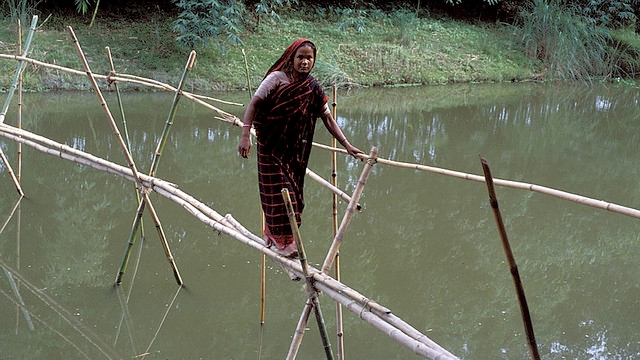Polluted water in urban poor communities transmits water-borne diarrheal diseases, such as cholera and typhoid, which can be particularly deadly to children. This evaluation studied whether an inexpensive water chlorination method installed in community hand-pumps reduced disease in poor communities in Dhaka, Bangladesh.
| Research area: | Water Supply, Sanitation and Hygiene |
| Country: | Bangladesh |
| Evaluation Sample: | All poor households, with at least one child under five, that access one of 160 studied shared water points in Dhaka. |
| Timeline: | 2013 – 2017 (Completed, endline report pending) |
| Intervention: | Water disinfecting technology |
| Researchers: | Stephen Luby, Stanford University; Amy Pickering, Stanford University; Peter Winch, Johns Hopkins University; Michael Kremer, Harvard University; Leanne Unicomb, icddr,b; Farhana Sultana, icddr,b; Pratibha Mistry, World Bank |
| Partners: | Dushtha Shathya Kendra (DSK); Stanford’s Lotus Water Initiative (LWI); J-PAL Urban Services Initiative; Government of Bangladesh; icddr,b; Stanford University; Johns Hopkins University; Harvard University |
Studies have looked at the effectiveness of making available to households free or cheap chlorine (see: Evaluations for chlorination). But distributing chlorine requires changing people’s behavior so they use chlorine tablets or dispensers, which isn’t always easy.
This project was focused on a method to reduce the global burden of water-related illness by developing and implementing a low-cost, in-line chlorination technology that delivers chlorine automatically when water pumps are used. The results of this impact evaluation can help inform programs seeking to ensure clean water, potentially offering an alternative approach for reducing water-borne illnesses that can harm especially children’s development.
Fully one third of the world's population- approximately 2.3 billion people- rely on shared water points, and this percentage has not changed over the past 20 years (The WHO/UNICEF Joint Monitoring Programme, 2012). |
Context
In Dhaka, more than 20 percent of the city’s 15 million residents live in slums and almost all rely on shared taps or handpumps for water. Efforts to market in-home disinfection technologies, such as chlorine products and filters, have not succeeded. Dhaka’s public water utility company has not considered installing disinfecting solutions at shared community distribution points because cost-effective technologies aren’t yet available. In this project, researchers used an inexpensive technology to automatically add chlorine to water dispensed at public taps and shared hand pumps. The technology had no moving parts and did not require electricity to operate.
